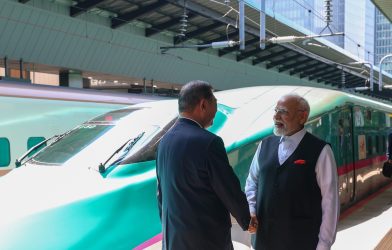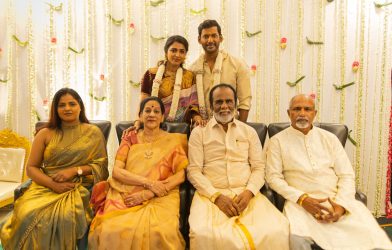Introduction: A Nation United in Devotion
Picture the streets of Mumbai alive with the rhythmic beats of dhol-tasha, the air thick with the scent of modaks, and millions chanting “Ganpati Bappa Morya!” as a towering idol of Lord Ganesha is carried through the city. This is Ganesh Chaturthi 2025, a festival that transforms India into a kaleidoscope of faith, culture, and community. For Aniket, a young artist from Pune, this year’s celebration is special—he’s crafted an eco-friendly Ganesha idol for his neighborhood pandal, a small act reflecting a growing national trend. At Bharat Tone, we bring you the heart and soul of how India celebrated Ganesh Chaturthi 2025, blending tradition with modern twists in this news post.
Starting August 27, 2025, and culminating in the grand Ganesh Visarjan on September 6, the festival saw India come alive with devotion to Lord Ganesha, the remover of obstacles. From Mumbai’s iconic Lalbaugcha Raja to Hyderabad’s towering Khairatabad idol, here’s how the nation honored Bappa in 2025.
A Festival of Faith and Fervor
Ganesh Chaturthi, also known as Vinayaka Chaturthi, is one of India’s most cherished Hindu festivals, celebrating the birth of Lord Ganesha. In 2025, the festival kicked off on August 27 during the auspicious Madhyahna Ganesha Puja Muhurat (11:05 AM to 1:40 PM), with devotees across Maharashtra, Karnataka, Telangana, Andhra Pradesh, Goa, and beyond welcoming Ganesha into homes and pandals.
Mumbai: The Heart of Ganeshotsav
Mumbai, the epicenter of Ganesh Chaturthi, buzzed with energy as millions flocked to iconic pandals like Lalbaugcha Raja and Khetwadi Ganraj. The Lalbaugcha Raja pandal, known as the “King of Lalbaug,” drew over 1.5 million devotees daily, with navasachi (wish-fulfillment) and mukh darshan (idol-viewing) queues stretching for kilometers. This year, the pandal embraced eco-friendly measures, using clay idols and live-streaming aartis for global devotees. Streets echoed with chants, dhol-tasha performances, and cultural shows, while the Visarjan procession on September 6 saw idols immersed in the Arabian Sea amid emotional farewells.
Story Moment: Aniket, watching the Lalbaugcha Raja Visarjan, feels a surge of pride. “My eco-friendly idol was small, but seeing Mumbai’s devotion inspires me to dream bigger,” he says, sketching designs for next year’s pandal.
Pune: Where Tradition Meets Grandeur
Pune, Maharashtra’s cultural capital, rivaled Mumbai with its vibrant celebrations. The Shreemant Dagdusheth Halwai Ganpati Temple, adorned with gold and flowers, attracted celebrities and locals alike. Pandal themes in 2025 focused on sustainability and social awareness, with one showcasing a Ganesha idol made from recycled materials. Traditional dhol-tasha troupes and devotional music filled the air, while sweets like modaks and ukdiche laddoos were shared in community feasts.
Story Moment: Sneha, a Pune college student, joins a dhol-tasha troupe for the first time. “The rhythm feels like Ganesha’s heartbeat,” she says, her hands sore but her spirit soaring after hours of practice.
Hyderabad: The Towering Khairatabad Ganesha
In Hyderabad, the 65-foot Khairatabad Ganesha idol stole the spotlight, drawing thousands with its massive laddu offerings and intricate decorations. The city’s celebrations blended South Indian traditions with modern themes, including pandals highlighting digital India and environmental conservation. Devotees thronged temples, and the Visarjan procession saw eco-friendly immersions in Hussain Sagar Lake, reflecting Telangana’s push for sustainable festivities.
Story Moment: Ravi, a Hyderabad techie, volunteers at the Khairatabad pandal. “Seeing people from all walks of life pray together reminds me why Ganesha is Vignaharta,” he says, handing out prasad to children.
Southern Splendor: Tamil Nadu and Karnataka
In Tamil Nadu, known as Vinayaka Chaturthi, celebrations began with Gauri Habba, honoring Ganesha’s mother. Families installed clay idols, offered Kozhukattai (modak-like sweets), and sang devotional songs. Chennai’s pandals hosted cultural events, blending Vedic rituals with community gatherings. In Karnataka, Bengaluru and Mysuru saw grand processions, with offerings like karigadubu and payasam. The Patra Pooja, using 21 types of leaves, added a unique touch to Karnataka’s rituals.
Story Moment: Lakshmi, a Chennai homemaker, prepares Kozhukattai for her family’s puja. “Ganesha brings us together every year,” she says, teaching her daughter the recipe passed down from her grandmother.
Goa and Beyond: Regional Flavors
In Goa, known as Chavath, families crafted clay idols and adorned them with betel and banana leaves, creating Matoli canopies to symbolize abundance. Traditional sweets like Nevri and Patoleo were staples, while folk dances like Dashavatar lit up villages. Delhi’s cosmopolitan celebrations featured large idols and Vedic chants, while Kolkata blended Bengali traditions with Ganesha worship, hosting bhajans and cultural programs.
Story Moment: Maria, a Goan student, helps her family build a Matoli. “It’s like offering nature’s best to Ganesha,” she says, hanging mango leaves with care.
A Modern Twist: Eco-Friendly Celebrations
In 2025, India’s Ganesh Chaturthi embraced sustainability like never before. From Mumbai to Hyderabad, pandals used biodegradable idols made of clay or paper mache, reducing environmental impact during Visarjan. Cities like Pune and Bengaluru promoted artificial tanks for immersions, while NGOs distributed free eco-friendly idols to low-income communities. Social media buzzed with #GreenGanesh trends, with influencers sharing tips on sustainable celebrations.
Story Moment: Aniket’s eco-friendly idol, made from natural clay, wins praise at his pandal. “Bappa would want us to protect the Earth,” he says, inspiring his neighbors to go green next year.
Historical Roots: From Shivaji to Tilak
Ganesh Chaturthi’s grandeur owes much to history. Chhatrapati Shivaji Maharaj promoted public celebrations in the 17th century to unite Marathas, while Lokmanya Bal Gangadhar Tilak transformed it into a mass movement in the 1890s to rally Indians against British rule. Today, the festival remains a symbol of unity, blending devotion with cultural pride.
Why Ganesh Chaturthi Matters
Beyond rituals, Ganesh Chaturthi 2025 united India in joy and purpose. It boosted local economies, with artisans, sweet shops, and flower vendors thriving. The festival’s spirit of togetherness transcended caste and creed, as seen in community feasts and pandal volunteering. For Indian students abroad, like those navigating U.S. visa challenges, virtual aartis offered a slice of home, reinforcing Ganesha’s role as the remover of obstacles.
Call to Action: Did you celebrate Ganesh Chaturthi 2025? Share your photos and stories with Bharat Tone at [email protected]. Let’s keep Bappa’s spirit alive!
Keywords: Ganesh Chaturthi 2025, India Ganesh festival, Lalbaugcha Raja 2025, eco-friendly Ganesh idols, Ganesh Visarjan 2025, Maharashtra Ganeshotsav, Pune Dagdusheth Ganpati, Hyderabad Khairatabad Ganesha.
Meta Description: Discover how India celebrated Ganesh Chaturthi 2025 with vibrant pandals, eco-friendly idols, and heartfelt devotion. From Mumbai to Hyderabad, join the journey with Bharat Tone.
Author: Bharat Tone Team
Published: August 29, 2025












